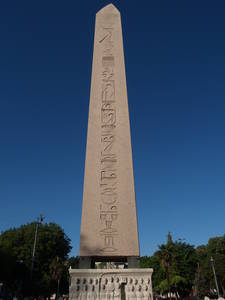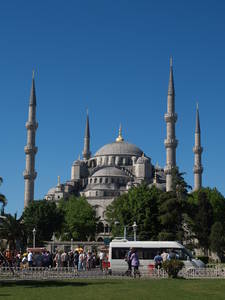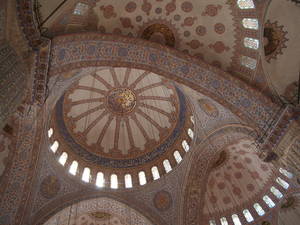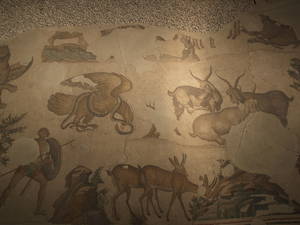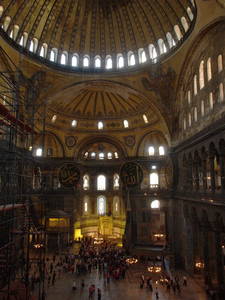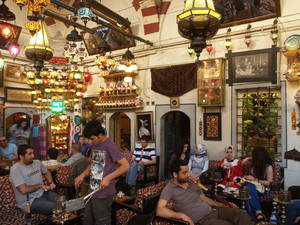Istanbul: Sultanahmet
Saturday 15th May
It got dark while I was on the shuttle bus from Sabiha Gokcen airport into Istanbul, so I didn't see much crossing the Bosphorus. Arriving in Taksim Square I was confronted with a confusion of traffic and people, but I got my bearings from my map and walked down the hill, through steep streets and pedestrian-only stairways, to Kabatas. There weren't a lot of people around and this might have seemed dangerous, except that the people I did meet were all tourists and dressed-up locals.
I got the metro from Kabatas to Sultanahmet, which was bustling with people and where I bought a quick kebab as a late dinner.
Walking through the Hippodrome to our hotel, I passed the oldest monument in Istanbul, a victory stela erected by Thutmosis III and brought to Constantinople by Theodosius. And just next to that is the monument erected by the Greek city states to commemorate the battle of Plataea, which was even more fascinating to me since I'd spent my teenage years obsessed by ancient Greek and Roman history. That took me as far back again as I'd gone moving from Sydney to Oxford, and Thutmosis another millennium.
At the hotel I met up with my aunt (mother's sister, Turkish teyze), Gabi, who had flown from Sydney.
Sunday 16th May
We started with the Tourist Information, which had no other customers. Someone with relatively poor English gave us not particularly useful information — and there wasn't even the usual stand of pamphlets and brochures. It seemed like there were tour buses everywhere, but it wasn't too crowded.
We began with a visit to a small mausoleum. Then we ventured into the "Blue" or Sultanahmet Mosque, which is the most prominent sight from our hotel's rooftop restaurant — and indeed one of the most prominent landmarks in Istanbul, with its distinctive six minarets.
